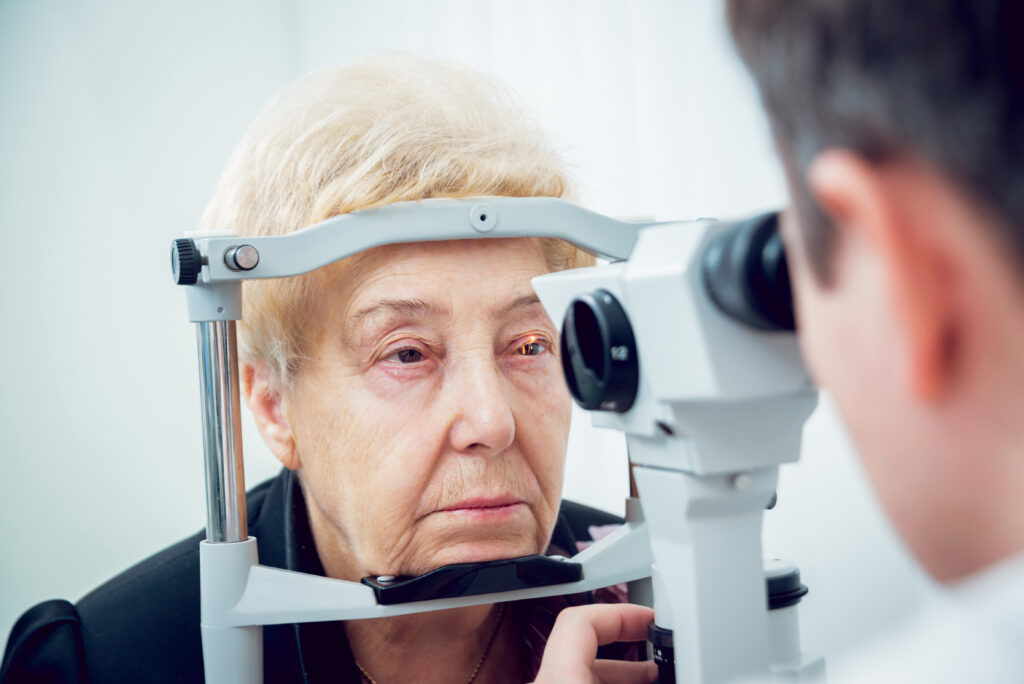Cataracts can cause vision problems that affect your daily life. Don’t worry, though. With a few cataract prevention tips, you can reduce the risk. It’s all about knowing what they are and how to manage them, especially as you grow older. Taking steps now helps keep your eyes healthy longer and improves your quality of life.
Introduction to Cataracts
Cataracts mean your eye’s lens gets cloudy. It’s like looking through a foggy window. This eye condition is quite common, especially among older folks. Many think only elderly people get it, but that’s a myth. Poor eye health can affect anyone, regardless of age. Cataracts affect your vision and make life a bit tougher, but they’re manageable. The goal here is to share ways to prevent and manage cataracts, helping you maintain clear eyesight for as long as possible.
What Are Cataracts?
Cataracts develop when proteins in your eye’s lens clump together. This causes cloudiness, making it tough to see clearly. Normally, the lens focuses light, allowing you to see sharp images. With cataracts, this function is disrupted. Imagine a photo where everything is blurry and lacks detail. That’s how cataract-affected vision can look. Symptoms like blurry vision and difficulty seeing at night can make daily tasks challenging. Activities you love, like reading or watching TV, might become troublesome. Recognizing these symptoms allows for early intervention.
Types of Cataracts
Not all cataracts are the same.
- Nuclear Cataracts form in the center of the lens, making visions dull.
- Cortical Cataracts appear as cloudy streaks on the outer edge of the lens. These can affect peripheral vision.
- Age-Related Cataracts develop as you grow older. They progress naturally over time and are quite common.
Knowing what type you have helps your doctor decide on the best treatment option for you.
Recognizing Risk Factors
Several factors increase your risk of developing cataracts. Age is the biggest one. Others include an unhealthy lifestyle and exposure to harmful environments. What you eat matters too. A diet high in unhealthy fats can increase risk, while balanced nutrition helps. Certain health conditions also contribute. Recognizing these risk factors early on gives you a chance to make changes that can prevent cataracts from becoming a problem in the future.
Early Warning Signs and Symptoms
How do you know if you might have cataracts? Look for these signs:
- Blurry vision
- Seeing halos around lights
- Sensitive to glare or bright light
These symptoms may seem similar to other eye conditions, making it hard to tell apart. But if they start affecting tasks like reading or driving, it might be time to see a specialist.
Strategies for Cataract Prevention
Preventing cataracts means adopting a few cataract prevention tips into your lifestyle. Begin with protective eyewear, especially outdoors. Sunglasses block harmful UV rays. Your diet counts too. Eating antioxidant-rich foods aids in cataract prevention. Think fruits and veggies. Regular eye exams spot changes early before they become severe. Also, managing health conditions like diabetes helps too. If you smoke, consider quitting. This habit increases cataract risks. Small lifestyle changes now lead to healthier eyes later.
The Diagnosis Process
Regular eye check-ups are key to catching cataracts early. During an exam, doctors use various tests to look for signs. They check your eye health and measure the clarity of your vision. Don’t hesitate to ask your eye care professional questions, like how often you should come in for check-ups. Knowing what to expect helps make the process smoother and less intimidating.
Treatment Options for Cataracts
When cataracts start affecting your life quality, treatment becomes necessary. Often surgery becomes a consideration. It’s seen as a safe procedure, improving vision significantly. Modern advancements have made cataract surgeries routine and successful. Doctors also offer non-surgical options if the cataract isn’t severe. After the operation, recovery is usually quick and success rates are high. Discuss options with your healthcare provider to discover what’s best for you.
Living with Cataracts: Daily Tips
Adjusting how you live helps manage cataracts effectively. Good lighting brightens surroundings, making it easier to see. Visual aids like magnifiers help with small text. Emotionally, coming to terms with changes in vision might be hard. Support from friends, family, or support groups makes it easier. Resources are available for both patients and caregivers. Seek them out for additional help.
Conclusion
To keep cataracts at bay, follow the simple cataract prevention tips discussed. Healthy habits like a balanced diet, sunglasses, and quitting smoking contribute significantly. Regular eye check-ups ensure you stay ahead of any issues. Remember, modern treatments for cataracts show positive results. Don’t hesitate to seek advice if you’re worried about your vision. A proactive approach keeps your eyes healthier longer, ensuring you enjoy clear, vibrant sight throughout life.

